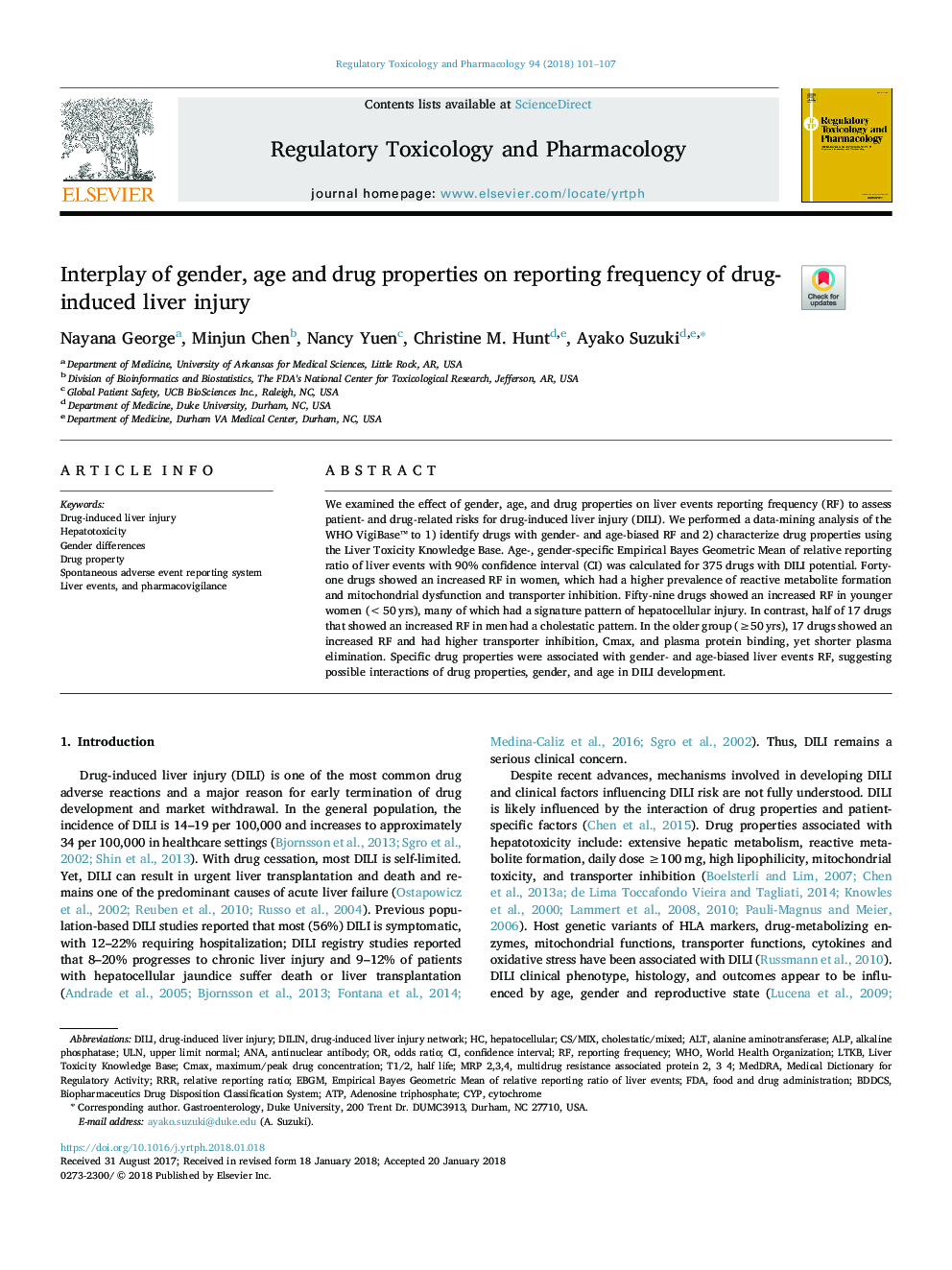| Article ID | Journal | Published Year | Pages | File Type |
|---|---|---|---|---|
| 8551430 | Regulatory Toxicology and Pharmacology | 2018 | 7 Pages |
Abstract
We examined the effect of gender, age, and drug properties on liver events reporting frequency (RF) to assess patient- and drug-related risks for drug-induced liver injury (DILI). We performed a data-mining analysis of the WHO VigiBase⢠to 1) identify drugs with gender- and age-biased RF and 2) characterize drug properties using the Liver Toxicity Knowledge Base. Age-, gender-specific Empirical Bayes Geometric Mean of relative reporting ratio of liver events with 90% confidence interval (CI) was calculated for 375 drugs with DILI potential. Forty-one drugs showed an increased RF in women, which had a higher prevalence of reactive metabolite formation and mitochondrial dysfunction and transporter inhibition. Fifty-nine drugs showed an increased RF in younger women (<50â¯yrs), many of which had a signature pattern of hepatocellular injury. In contrast, half of 17 drugs that showed an increased RF in men had a cholestatic pattern. In the older group (â¥50â¯yrs), 17 drugs showed an increased RF and had higher transporter inhibition, Cmax, and plasma protein binding, yet shorter plasma elimination. Specific drug properties were associated with gender- and age-biased liver events RF, suggesting possible interactions of drug properties, gender, and age in DILI development.
Keywords
ALTEBGMFDABDDCSULNMedDRACmaxRRRCyPt1/2Adenosine TriphosphateATPDrug-induced liver injuryAlanine aminotransferaseALPAlkaline phosphataseantinuclear antibodyANAGender differencesDILIDILINWorld Health OrganizationFood and Drug AdministrationHepatocellularHepatotoxicitycytochromeDrug-Induced Liver Injury Networkconfidence intervalodds ratiohalf lifeWHO
Related Topics
Life Sciences
Environmental Science
Health, Toxicology and Mutagenesis
Authors
Nayana George, Minjun Chen, Nancy Yuen, Christine M. Hunt, Ayako Suzuki,
